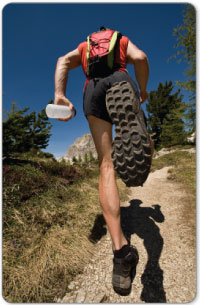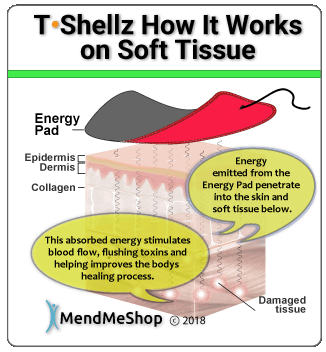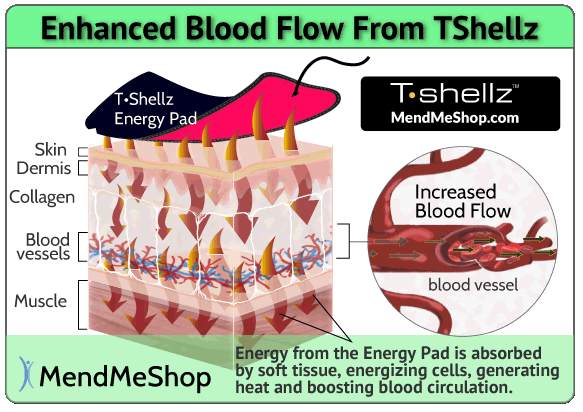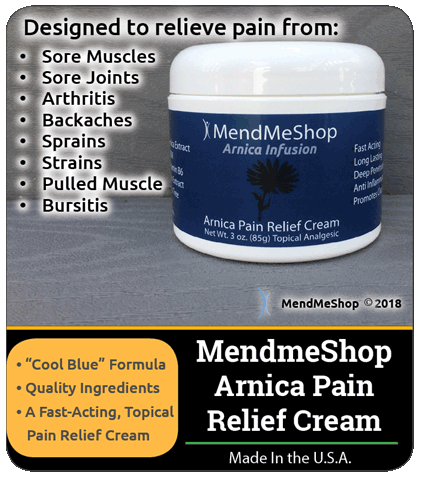Shin splints is a general term used to describe pain in the front of the shin or tibia bone. This pain can be caused by damage (tiny cracks) to the tibia bone itself, tears in the tibialis anterior muscle, or tears along the tibialis anterior tendon where it attaches to the tibia. It is also referred to as Anterior Compartment Syndrome or Medial Tibial Stress Syndrome, depending on the location of the pain. This condition is often caused by stress to the tibia and surrounding muscles due to an increase in athletic training or demanding training programs (i.e. marathon runners).

Although "shin splints" usually refers to pain that occurs at the outer, front part of the lower leg (anterolateral shin splints), it less commonly refers to pain at the back, inside of the lower leg (called posteromedial shin splints). Both types are painful, with pain occurring anywhere from just below the knee all the way to the ankle, and can take a long time to heal without proper treatment.
The most common cause of shin splints is continued, repeated stress to the tibialis anterior muscle and tendon, the extensor digitorum longus muscle, the extensor hallucis longus, the tibialis posterior muscle and tendon, and the soleus muscle as well as the tissue around the muscles (deep crural fascia) attached to the tibia. Excess wear and stretching of these tendons and muscles can occur with repeated stress or jarring of the tibial bone. In addition, when the muscles swell they put pressure on the fascia which causes more pain. Without an appropriate amount of recovery time or proper conditioning these muscles, the deep crural fascia, and the tibial tendons can become stressed and/or torn to the point of inflammation.
Due to the cause, shin splints are considered a repetitive or cumulative stress injury and are common among runners, gymnasts, dancers and other sports that involve high impact on the foot and lower leg. Approximately 10-15% of all running injuries are attributed to shin splints.

Anterolateral shin splints affect the tibialis anterior muscle in the outer, front portion of the lower leg. This condition can be the result of a natural imbalance in the size of opposing muscles. Shin muscles pull the foot up, whereas the large and powerful gastrocnemius muscles in the calf pull the foot down when the heel strikes the ground. An imbalance can cause the heel to hit the ground improperly causing excess jarring of the tibia and surrounding muscles.
Anterolateral shin splints will cause pain in the front and outside of the shin which can result from damage to the tibialis anterior muscle itself or the deep crural fascia. Initial pain is felt when the heel strikes the ground though eventually the pain just remains.
To allow this type of shin splint to heal, you should avoid activities that cause stress to the tibia and tibialis anterior muscles and do other kinds of exercise recommended by your doctor or physical therapist. Such exercises usually involve stretching the calf muscle, as tight calf muscles put a lot of pressure on the shin muscle and the anterior tibial tendon.
Posteromedial shin splints affect the soleus muscle and the tibialis posterior muscles and pain appears in the interior (or medial bone) in the lower leg). These muscle groups are responsible for lifting the heel to support a runner's weight on the ball portion of the foot when running.

Posteromedial shin splints (also called Medial Tibial Stress Syndrome or MTSS) are often caused by running on a sloped track or other non-level running surface or wearing improper shoes that do not protect the foot from rolling (pronation).
Pain begins on the inside, back of the lower leg (usually within 7 inches above the ankles), but will worsen and continue to rise up the leg. Initially, only tendons will become inflamed, but if running continues, the muscles themselves could become affected. In the most severe cases, the tibialis posterior tendon could become detached from the bone - a painful occurrence that causes bleeding and excessive inflammation.
To allow a posteromedial shin splint to heal, the running must temporarily stop and other therapeutic exercises recommended by your doctor or physical therapist can be done. Special shoes may be prescribed during the healing phase, and it may be advisable to look into potential problems with over-pronation of the feet (flat feet). This can often be solved by wearing shoes that prevent pronation and/or avoid running on side slopes.
Stress fractures (or bone trauma) in the tibia and fibula are sometimes related to anterolateral shin splints. Due to excess jarring of the bone, microscopic cracks may form in one or both of the lower leg bones. Avoiding the activity or sport that caused the cracks is advised to allow the bones to rest and repair. Without allowing enough time to recover, these cracks can become a fracture which is very painful.
Shin splints may be caused by:

An injured muscle, ligament or tendon will receive very little blood flow; this occurs for a couple of reasons: (1) swelling and inflammatory symptoms restrict blood flow, and (2) lack of movement (its painful!) reduces blood flow in the area. Add the two up and you can start to see why this can be a major problem over time. In cases where there is little to no inflammation (tendonosis, chronic tendonitis, muscle pulls) - the use of cold is relatively ineffective as there is little or no swelling to be dealt with.
If you are experiencing pain and swelling in the very early stages of the injury (first 48 to 72 hours), the first step in a conservative treatment protocol would be to focus on reducing the discomfort by applying a Cold Compress or Ice Pack to the soft tisse injury and incorporate the use of a high quality pain relief cream such as our Arnica Infusion Cream.
If you are experiencing pain and swelling, not only will you use cold for the first 48 to 72 hours after the injury, but you should also use it during other stages of the healing process. Some examples include...
Having a Cold Compress or Ice Pack available at home to use if and when the need arises is helpful. Many of you already do so.
Often, however, too many people over-focus on cold while ignoring the most critical aspect to healing - nourishing injured tissue with a strong blood flow - the body's healing capability is generally dependent on blood flow..
This leads to the most important recommendation - Stage 2.
Even though the concept is simple, improving blood flow to injured tissues can be difficult. When the injury is in an area with low blood circulation (or you have a condition that affects your blood circulation), the challenges are even greater. Traditional methods require your muscles and tendons to move to promote blood flow (exercise), but that same motion that promotes blood flow can at times lead to making your pain and condition worse.
Most people we deal with tell us these scenarios have happened to them many times in the past. Perhaps it has already happened to you.
Promoting blood flow within a muscle, bursa or other soft tissue injury to help the body heal itself is a concept that has been utilized for centuries. This is where the focus has to be if you are seeking long-term improvement.
Oxygen and nutrients, carried within the blood, are critical for the body to heal itself. Without proper blood flow, recovering from an injury or condition will be delayed...sometimes for a very long period of time.
The real challenge is how do you promote blood flow to an injury site without causing further injury (moving)? This goal is further complicated by the fact that muscles and tendons in the lower body are involved in pretty much every physical movement we perform each day.
Now, on to recommendation number two in the journey to heal your soft tissue injury...

Energy emitted from the TShellz Wraps® increases blood flow in and around the application area - we call this "LEC Response" (Localized Enhanced Circulation Response). The objective of the TShellz Wrap® is to increase blood flow in these targeted areas, resulting in relaxation of the vessel walls. The vessels then gently expand, allowing for more nutrient rich blood flow along with extra oxygen to reach the damaged tissues. Plus, the enhanced blood flow helps in flushing waste and fluid build-up from the injury site - further enhancing the ability of the body to heal.
With a TShellz Wrap® application, more blood begins to flow effectively to soft tissue within the body - for the length of the treatment and a short duration thereafter. Deep tissue needs the extra blood flow to heal as it is through the blood the body carries the oxygen and nutrients needed for proper and long-term healing.

The best option we came across in our research to accomplish blood flow to soft tissue in the upper and lower legs is the TShellz Wrap®. Use of this device results in a dramatic increase in blood flow to the injured tissues in the treatment area - all in a non-invasive manner.
Have you seen what happens when you add water to a flower wilted from drought? In essence, your injured muscle/tendon/ligament is much like a "wilted" flower; your body wants to heal its injury, but needs lots of nutrients to do it. Blood brings new life to your soft tissue by delivering healing nutrients and oxygen that are vital to your tissue. Without a good supply of blood, your soft tissue injury simply won't heal quickly, and as such increase your risk of reinjury and/or a chronic injury.
Using a TShellz Wrap® will not expose you to the risk of causing further harm to soft tissue like you can when using rigorous exercise. The TShellz Wrap® accomplishes the goal of enhanced blood flow without the need for intensive exercise and as such reduces your risk of re-injury.
The intention of a TShellz Wrap® is to ease pain by dilating blood vessels, decrease stiffness by elongating soft tissue, improve blood circulation, and boost metabolism and enzyme activity. In stimulating localized blood flow to damaged soft tissue, you provide needed oxygen and nutrients to grow new collagen. In addition, you will experience a clearing of toxins and excess fluid build up from the injury site. Over the intermediate term, this helps to reduce incidents of swelling as trapped fluids will be whisked away - reducing pressure on blood vessels.
Using the TShellz Wrap® is truly a unique experience. Within moments of applying the wrap, you can feel the sensation due to the increase in blood flow within the area. During a treatment, and for quite some time after you finish, the treated area will feel relaxed and warm. It's a very soothing sensation and extremely effective.
We recommend the use of a TShellz Wrap®:
TShellz Wraps® contain a unique Carbon Fiber Energy Pad which is flexible and will shape to conform to your body. This Energy Pad emits a uniform wave of perfectly safe energy over its entire surface. This energy is absorbed by soft tissue in the treatment area, opening blood vessels, resulting in an increase in blood flow. Increased blood circulation is what your body needs to accelerate the healing of soft tissue and this is why we recommend the TShellz Wrap®.
The Leg TShellz Wrap® is an FDA Registered Medical Device and is suitable for use in therapeutic clinics and FROM HOME. It is completely safe for people and patients to use for themselves.
The technology found in a TShellz Wrap® has been used for decades in the worlds of professional and amateur sports - a contributing factor as to why athletes seem to recover from injuries so quickly.
Have you ever wondered by an athlete can return to activity after 3 or 4 weeks following a tendon injury - while your average person takes much longer to return back to normal? The secret isn't really that much of a secret - it involves consistent treatments (meaning multiple times a day) using a treatment like the TShellz Wrap® to stimulate blood flow to the injured tissues. Most athletes have the luxury of using in-house facilities many times per day.
How many us can afford the time and money to visit a clinic multiple times a day? Very few indeed. This is how you can gain some of the advantages that athletes enjoy in their injury recovery - by using a device like the TShellz Wrap® two or three times a day on a consistent basis.
We believe the TShellz Wrap® to be one of the most effective home treatments to increase localized blood flow to soft tissue in and around the treatment area.
We can promise that you will receive a product that is designed to be safe and does what it is supposed to do...quickly relieve pain and aid in the recovery from tendon, muscle and other soft tissue injuries.
The unit plugs into a standard wall outlet to get its power. The nice thing about the power supply is that the same unit can be used in North America and overseas as well. It has the capability to operate between 110v and 230v.
The TShellz Wrap® has a special signal controller that can be set for 3 different power levels of application (3=High, 2=Medium, 1=Low). The cord is long enough that you can sit or lie comfortably and watch TV, read or surf the net while you're using it.
Treatments are max 30 minutes in duration and the device can be worn over clothing. This allows you to use the device at work, at home, or really anywhere you have access to an electrical outlet.
The most common question we receive from individuals prior to purchasing is - how many times a day should I be using my TShellz Wraps® and when should I be using them? While treatment plans will differ for each individual and their specific injury, there are general guidelines that should be adhered to.
The TShellz Wrap® would then be used:
Dealing with aches and pains affecting the foot, ankle, leg, knee, hamstring, hip, back, arm, shoulder, elbow, wrist, or hand? If so, then applying the Arnica Infusion to any of these targeted areas will bring about fast relief from the pain and sore tissues. Simply apply a small amount of cream to the body and moments later, you will experience a soothing and comforting sensation over the area.
Arnica Infusion is specially designed to relieve pain due to sore muscles and joints associated with arthritis, backaches, sprains, strains, and bruises. No matter if you are dealing with an acute injury, chronic pain, or a general "flare-up" - you will experience fast relief from pain and inflammation.

This is a product that many of our current MendMeShop customers asked us to develop. So we focused our time and resources over the past few years and came up, with we believe, will be one of more effective, fast acting, topical pain relief creams on the market.
You are likely familiar with some of the standard topical agents on the market as most of our customers use them. The are mass marketed and even found in most department stores now.
Well, we are here to say that Arnica Infusion goes many steps beyond what they offer.
Made in the USA at an FDA registered manufacturing facility, you can be assured that Arnica Infusion is both safe and effective. We only source top grade ingredients while implementing strict quality control checks during every step of the production process. Expect the same high quality that MendMeShop customers have been accustomed to since we started the company in 2005.
The "Cool Blue" formula is the perfect balance between the smooth application of a cream and the effective absorbing factor of a gel. It is not too thick and not too thin - just the right texture. Best of all, it feels very nice on the skin!
Each application of Arnica Infusion feels so comforting and soothing, we are certain it will become an item you will not want to live without.
The Arnica Infusion formula is based on a combination of scientific research and the use of high quality ingredients. The properties within the formula were chosen for their pain relief, anti-inflammatory, and soothing qualities.
The acting ingredients within the formula include ones many of us are familiar with; along with ones that have not received a lot of publicity (only in research circles). Extensive testing resulted in a blending of ingredients that provides the most synergistic of benefits.
The notable ingredients in the Arnica Infusion formula include:
Extensive quality control procedures during the manufacturing process ensure the ingredients and final product are both safe and effective. We would not stake our reputation on anything but the best.
Apply Arnica Infusion at work to help reduce acute discomfort associated with overuse of muscles and joints. No matter if you are in a physical demanding job or work within an office environment, you will be placing stress on different parts of the body and aches and pains will result.
If you suffer from a sprained ligament, pulled muscle, strained tendon, or even bruising - apply Arnica Infusion for quick relief of the pain.
Application of Arnica Infusion can be done up to a maximum of 4 times per day on a consistent basis to help bring about relief from various pains and aches.
Follow up your TShellz and Cold treatments with an application of Arnica Infusion. Combine the pain relieving benefits of Arnica Infusion along with the healing benefits of the wraps to make your recovery go much more smoothly.
Do not apply Arnica Infusion within a 2 hour timespan before a TShellz Wrap® treatment.
Whether you decide to use the Arnica Infusion in conjunction with the TShellz Wrap® and other treatments - or if you decide to use the cream as a stand-alone product - you will not be disappointed with the results. We guarantee it.
AidYourHamstring advisors do not work on commission, so be assured you will only receive fair and objective information.
Product Advisors are available 9:00 am to 5:00 pm Eastern Standard Time Monday to Friday.
I want to learn more about Surgery & Post-Surgery Recovery
I want to learn more about Circulation Boost
I want to learn more about Ice & Heat: Which Is Better For Treatment?
I want to learn more about Stretching for the Hamstring
I want to learn more about Soft Tissue Injury Treatments
During your recovery, you will probably have to modify and/or eliminate any activities that cause pain or discomfort at the location of your soft tissue injury until the pain and inflammation settle. The more diligent you are with your treatment and rehabilitation, the faster you will see successful results!
Please be aware that this information is neither intended nor implied to be a substitute for professional medical advice. CALL YOUR HEALTHCARE PROVIDER IMMEDIATELY IF YOU THINK YOU MAY HAVE A MEDICAL EMERGENCY. Always seek the advice of your physician or other qualified health provider before using any of our outstanding products to make sure they are right for you and your condition or if you have any questions regarding a medical condition. Always see your doctor for a proper diagnosis as there are often many injuries and conditions (some very serious) that could be the cause of your pain.
© 2025 In.Genu Design Group, Inc. Contact Us